Scottish Schools Adolescent Lifestyle and Substance Use Survey 2015: teenage lifestyle trends
Report on the lifestyles trends of 13 and 15 year olds in Scotland.
This document is part of a collection
3 Friends
Number of close friends
The majority of all pupils (81%) had three or more close friends and only a very small percentage of pupils (2%) reported having no close friends at all.
15 year old boys were a little more likely than 15 year old girls to have three or more close friends. There was no significant difference between 13 year old boys and girls.
The proportion of pupils with three or more close friends has declined slightly between 2006 and 2015 for all groups except for 15 year old boys (Figure 3.1).
Figure 3.1 Proportion of pupils who had three or more close friends, by age and gender (2006-2015)
Q. How many close friends would you say you have?
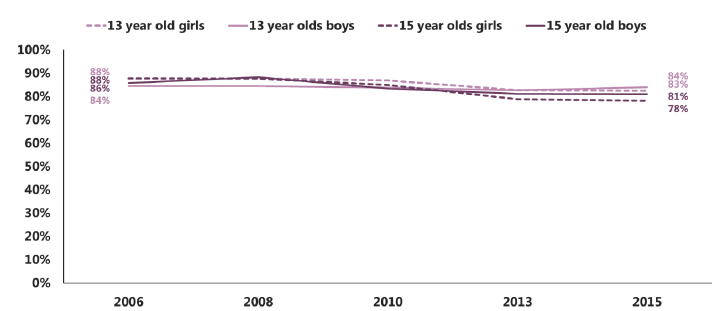
Base: all pupils (for full base sizes please see Appendix A)
Age of friends
Two-thirds of pupils (66%) had friends of a similar age to them and over a quarter (28%) had friends of a mixed age. There were no notable differences by age or gender ( Figure 3.2).
Since 2006, there has been a gradual increase in the proportion of both 13 and 15 year old pupils with friends the same age as them, and a decrease in those with mixed aged friends. The proportion of all pupils with mostly older or younger friends has remained static ( Figure 3.3).
Figure 3.2 Proportion of all pupils with friends who are the same age, of mixed ages, older or younger (2015)
Q. Are your friends older, younger, or about the same age as you?
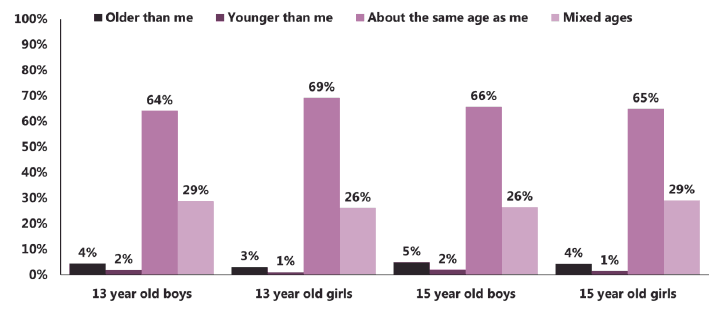
Base: 13 year old boys (6,039), 13 year old girls (6,460), 15 year old boys (5,365), 15 year old girls (5,473)
Figure 3.3 Proportion of all pupils with friends who are the same age, of mixed ages, older or younger (2006-2015)
Q. Are your friends older, younger, or about the same age as you?
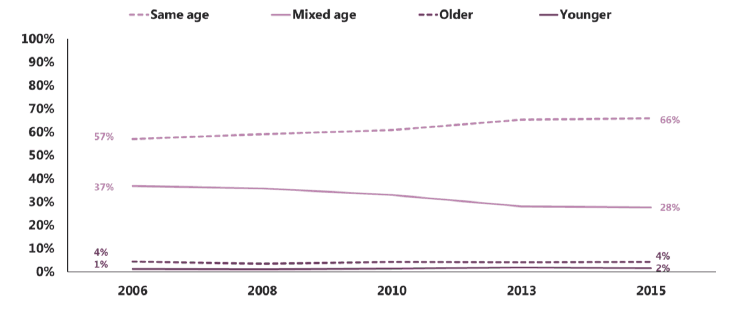
Base: all pupils (for full base sizes please see Appendix A)
Number of evenings spent with friends each week
It was most common for both 13 and 15 year olds pupils to spend between three and five evenings a week out with friends (46%), with little difference between the subgroups ( Figure 3.4).
There has been a move away from spending many nights out with friends, to just one or two. The proportion of pupils who spend 6 or 7 nights out with their friends a week has declined between 2004 and 2013, while the proportion of pupils spending only one or two evenings out with has increased. The proportion of pupils spending no evenings or three to five evenings out with friends has remained fairly stable since 2000 ( Figure 3.5).
Figure 3.4 Number of nights spent with friends in a typical week, all pupils
Q. Thinking about a typical week, how many evenings do you spend out with friends?
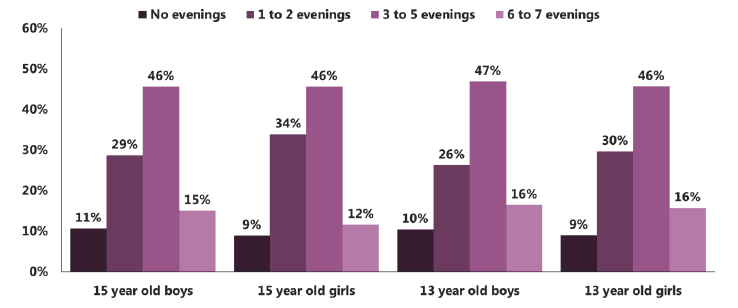
Base: 13 year old boys (6,039), 13 year old girls (6,460), 15 year old boys (5,365), 15 year old girls (5,473)
Figure 3.5 Number of nights spent with friends in a typical week, all pupils (2002-2015)
Q. Thinking about a typical week, how many evenings do you spend out with friends?
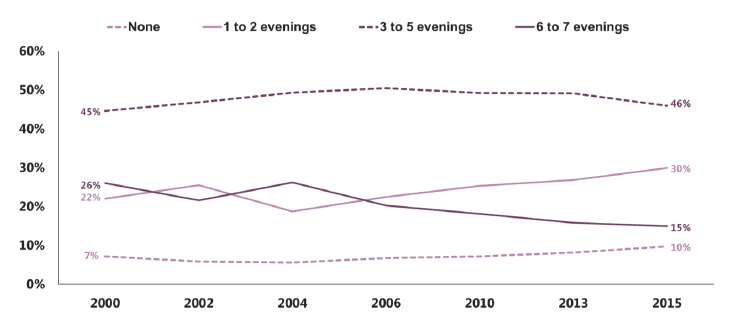
Base: all pupils (for full base sizes please see Appendix A)
Contact
Email: Julie Guy
Phone: 0300 244 4000 – Central Enquiry Unit
The Scottish Government
St Andrew's House
Regent Road
Edinburgh
EH1 3DG
There is a problem
Thanks for your feedback